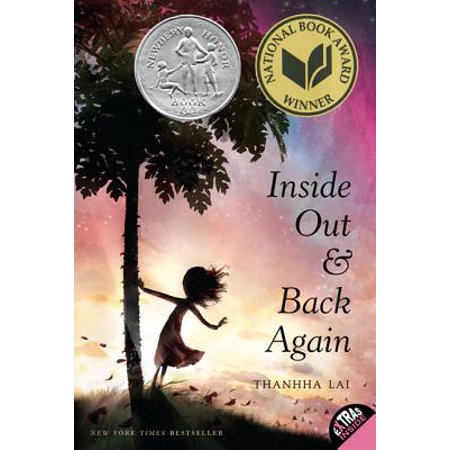
Inside Out and Back Again is told through the eyes of a little girl, Hà who is forced to leave with home with her family after the Communist Revolution in Vietnam. The story follows her life of hardship and then long boat ride out of a hostile southern Vietnam and then finally her difficult experiences adjusting to English and life in America as a foreigner.
The adjustment is so difficult and painful that she actually mentions how she would rather be in wartime in Saigon (Vietnam) than peacetime in Alabama (America). This partly because of the teasing she faces but mostly because she is an outsider and that reality is even more pronounced because of the language barrier. There is a growing realization and dislike of her difference however as she learns more English. Language is used to taunt her but when she learns she uses the same language that was used against her. She figures out how to “fight without using her fists” as her mother said. The language used emphasizes how she sees the world as a child. We see that in a different way she says names, how she describes things and what it stands out in her mind. This is seen with S’s and Vietnamese pronunciation for when necessary to differentiate sounds. Not knowing a language makes her seem stupid which is anything but the case and this factors into how people treat her at school.
Chapters are divided, and often short, bold letters used to emphasize a strong emotion. Such as “I hate being told I can’t do something because I am a girl” Time is recounted in different ways at the end of each chapter, which serves to rationalize her thinking as a child and understand what events are significant to her. Although it is through her eyes, we see rejection it is felt by her brothers and mother as well. Some examples include her brother being taunted at school and her mother nearly being denied service at a butchery because of war.
If considered through a feminist lens, the inferiority of women in Vietnam would be considered and how that changed throughout the book. Although this cultural inferiority is evident there is a very obvious rebuttal against this notion, in innocent and childlike ways of her touching her toe on the mat before her brothers. She is treated fairly by her brother who teaches her self-defence but is terrorized by an American boy in her school. This serves as a depiction of males and their relations to females of both sides of the spectrum. Her family lives with the painful history of the war every day because of their lost father which is a theme throughout the book. The name father is mentioned in the book in capital letters and thus seen as god-like by the family. Her mother carries the family and acts as a depiction of strength and resilience.
When considered in a post-colonial lens this book highlights the prejudice faced the “other” and how it is enforced by “superior or normal” culture. Encourages the reader to consider how the “other” is more than one- dimensional versions that are commonly portrayed and calls for a greater measure of empathy by the reader.